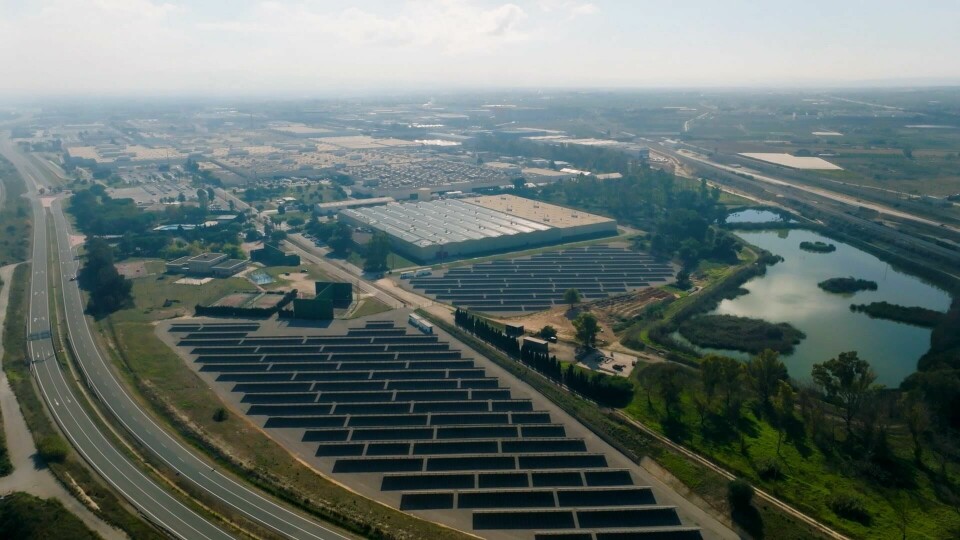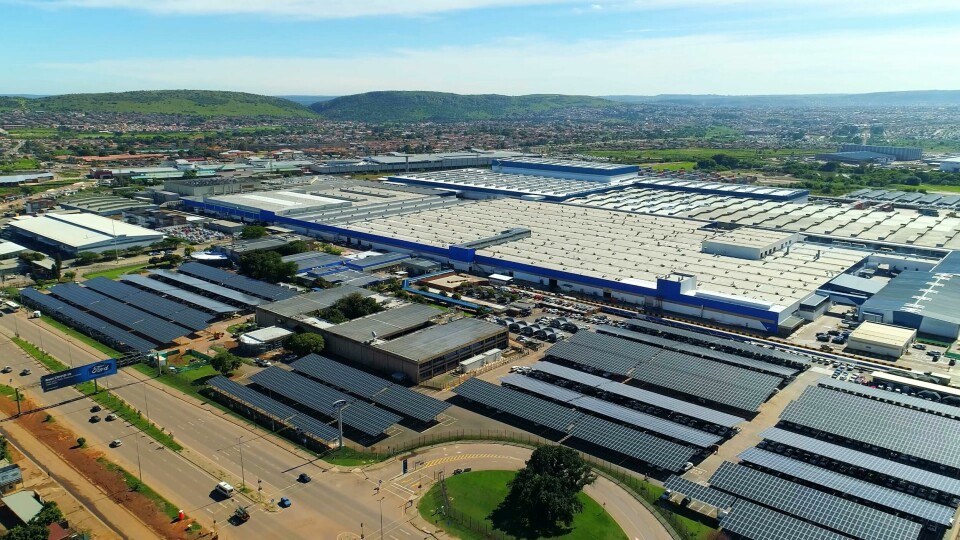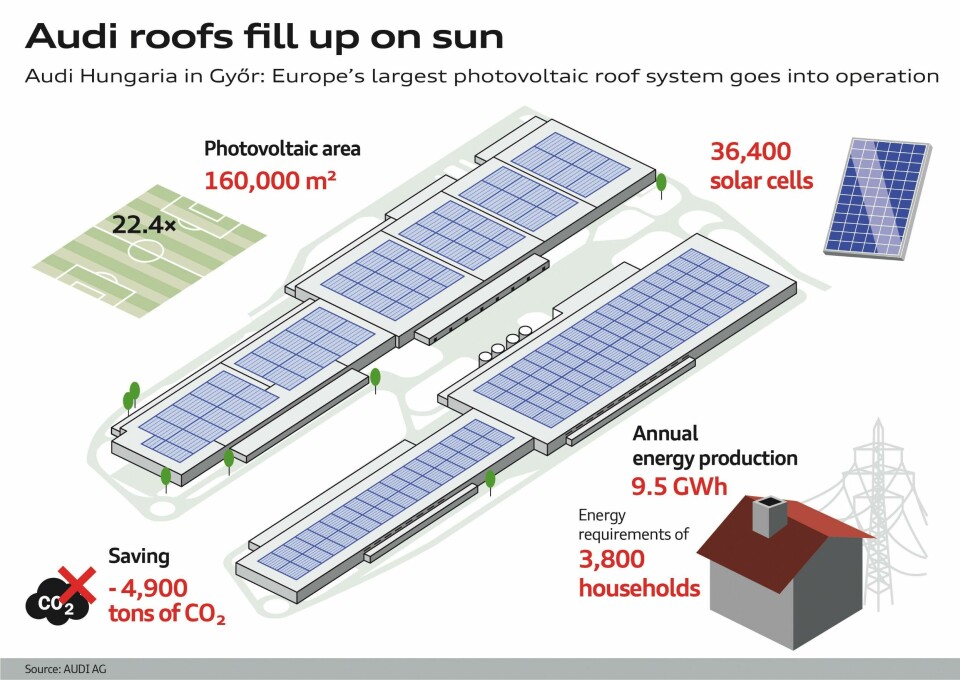
Going green: Self-generating electricity on-site
When it comes to production in the automotive industry, companies including Ford and Audi are increasingly looking at how they can source the energy they use in a more environmentally efficient way. One way to do this is by generating electricity on-site
The automotive industry is a massive user of energy in its production operations. Not only is it looking to develop products that are energy efficient, it is also increasingly seeking to ensure that the energy it consumes in those production operations is sourced by environmentally efficient means. Self-generation of electricity on-site using technologies that eschew fossil fuels is therefore a relevant option.
Renewable sources
One company doing exactly that by putting an emphasis on the use of solar power to generate electricity on-site for its manufacturing plants is Ford. At the beginning of this year the company announced that the existing 4.64MWh per year solar installation at its Almussafes plant in Valencia, Spain, would be augmented by a further 3.76MWh per year. The company says that it is targeting a further increase in the installation, which is in a non-productive area of the site, to enable it to reach close to a peak of 10MW in 2024. Furthermore, all electricity bought in for the plant has been generated from renewable sources since the beginning of 2022.
The company does admit, though, that the percentage of total electricity consumed at Almussafes that is generated on-site is still quite small. “Currently it covers around 2% of the plant’s electricity demand,” the company states. “The target is to increase this to 10% in 2024, but this depends on the real consumption, which can vary. In parallel, we also have individual energy efficiency measures to reduce consumption in general as well.”

But Almussafes is not alone in the company’s efforts to use self-generated electricity even in Europe. “There are already wind turbines on Ford ground at Dagenham in the UK as well as solar installations in Cologne that are run by local energy providers,” the company adds.
Nor is Almussafes alone in its commitment to use only bought-in electricity generated from renewable sources. The policy is that energy is purchased through local suppliers and is third party certified as being from renewable sources. “In Cologne this is has been the case since 2008,” the company states. All electricity demand there is covered by renewable energy through the local supplier RheinEnergie and is certified through the TÜV Rheinland.
In fact, the company states that in Michigan DTE Energy, the largest local producer of renewable energy, has already commissioned a new rooftop solar array on a parking garage at the Ford Research & Engineering Centre in Dearborn. The 2,159-panel array includes an integrated battery storage system and will be used to power newly installed electric vehicle (EV) chargers.
Elsewhere, Ford’s Hangzhou Plant in China has included a solar photovoltaic installation since 2019, which now produces around 25% of the total power consumption of the plant while reducing carbon emissions by nearly 10,000 tonnes. Meanwhile, in South Africa, solar panels now generate 35% of the Silverton plant’s electricity requirements. “Globally we aim to reach carbon neutrality no later than 2050,” states the company.
Solar power installation
Perhaps the most common technology for on-site power generation in industrial facilities is that of solar panels. As Christelle Barnes, UK lead for solar power generation technology provider SolarEdge Technologies, points out, there is at least one straightforward reason for this. “Manufacturing facilities typically have large, flat roofs which are ideal to house extensive solar installations,” she says. Moreover, while solar power can vary according to the weather and the times of the year, and even the day, it does have the counterbalancing virtue that its costs are not subject to the same inflationary pressures as for grid-supplied electricity.
Barnes says that while the exact components of a solar power installation may not always be identical, they will include panels, mounting equipment, DC-to-AC inverter, wiring and fuse box connection. Perhaps surprisingly though, she adds that while the panels are the most visible element of the system, the inverters provide the ‘brains’ and that while they account for less than 10% of the cost of a typical solar application, they are responsible for 100% of the energy generation.
Barnes explains that in what she describes as a “traditional string inverter system”, in which panels are wired in a series to a single inverter, the inverter performs two main functions: DC to AC power conversion and maximum power point tracking (MPPT), which means ensuring the extraction of maximum power from the system. But this format can result in an energy mismatch when modules operate at different efficiencies. Quite simply, if the output of a single module is low, the efficiency of the entire string is reduced to the level of the lowest performing module.
The alternative is that of DC-optimised inverter systems in which the MPPT function is carried out by power optimisers placed directly onto the solar modules, while a simplified inverter effects DC to AC conversion and grid connection. “This effectively isolates each module, ensuring that any faults or shading will also be isolated,” Barnes explains. “The result is a much higher energy yield over the system’s lifetime of typically between 2-10%.”

One company that has implemented solar power technology in precisely this format is William Hughes at its 87,000 sq. ft2 site in Stalbridge, Dorset, in the UK, which provides wire products including custom-made springs to customers in various sectors globally including automotive. The large roof at the William Hughes site is described as making it an ideal candidate for solar, but with some challenging factors including multiple aspects, hundreds of skylights, as well as occasional inter-row shading from roof pitches which would cause significant power loss in a traditional PV system.
The 400kW installation was put in place over just four weeks in 2021 by local company CleanEarth and utilises four high-power SolarEdge 82.8kW three phase inverters. It is expected to deliver electricity at a levelised cost of only 3.2p/kWh compared to the 9p/kWh paid on average by UK manufacturers, achieving payback in just 3.8 years and saving £1.4m over the system’s lifetime.
Being CO2-neutral
Meanwhile, another car maker intent on ensuring it uses only ‘green’ energy is Audi. “The gradual conversion of the Audi production sites to renewable electrical energy began back in 2012 with the Ingolstadt site,” states the company. “Today all Audi locations obtain only electricity generated from renewable sources for vehicle production.”
Moreover, the company is emphatic that in addition to the purchase of green electricity, self-sufficiency at the locations is to be expanded. “Audi Brussels already produces solar power on an area of 107,000 square metres, making it the largest photovoltaic plant in the Brussels region,” it states. “This makes it the largest photovoltaic installation in the Brussels region since it generates around 9,000 megawatt hours of the electricity required in the plant itself every year.”
In fact, Audi states, since 2018 its Brussels plant has been “the world’s first certified CO2-neutral large-scale production site in the premium segment.” This has been verified by the fact that the site has received a ‘CO2-neutral location’ certificate from the Belgian testing company Vinçotte. Meanwhile at the Győr site in Hungary “Europe’s largest photovoltaic rooftop system was commissioned in 2020 on an area of around 160,000 square metres.”

Elsewhere, production at Böllinger Höfe in southern Germany is now CO2-neutral with the site using only ‘green’ electricity since the beginning of 2020. The company says that a combined heat and power plant operated via the balance sheet purchase of waste biogas supplies the heat required for production at Böllinger Höfe. It adds that it offsets emissions that cannot currently be avoided by renewable energy sources with so-called ‘carbon credits’ from certified climate protection projects and that the CO2 neutrality of the site has been independently verified.
In addition, Audi confirms that heat supply at its sites is also to be gradually converted to CO2-neutral alternatives by 2025. Projects such as the supply of geothermal energy at Győr or the purchase of CO2-neutral waste heat at Ingolstadt in Bavaria, including from a neighbouring refinery, are taking the lead in this respect.
Győr has, in fact, been using a geothermal plant for heat supply since 2012. The plant covers around 70% of the site’s requirements by supplying at least 82,000-megawatt hours of thermal energy annually. As such Audi Hungaria is “the largest user of industrial geothermal energy in Hungary” with remaining heat demand covered by the purchase of biogas via the European gas network.
Indeed, Audi is emphatic that “future energy supply will be based on a mix of sustainable and economically viable energy sources”. It says it is currently pushing ahead with the expansion of solar energy generation but that further ahead wind power and biomass will also become relevant.
Ultimately, the central goal of the Audi environmental program Mission: Zero is to achieve CO2-neutral production at all Audi locations worldwide by 2025. This has already been achieved as a milestone at Audi Brussels (2018), Audi Hungaria (2020) and Böllinger Höfe (2020). The remaining sites in Ingolstadt and Neckarsulm in Germany and San José Chiapa in Mexico currently achieve around 70, 65 and 80% CO2-neutrality, respectively, and are also expected to catch up to 100% by 2025


